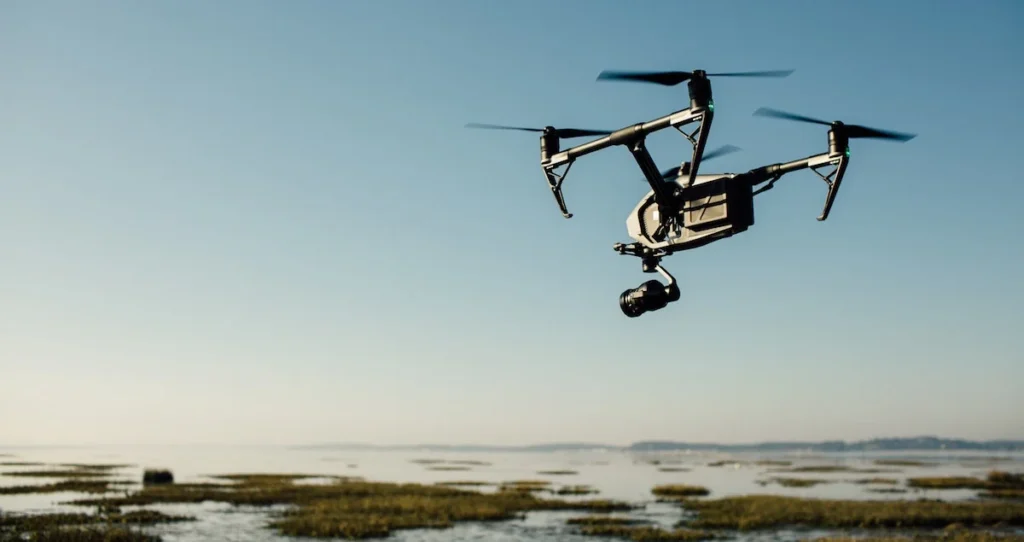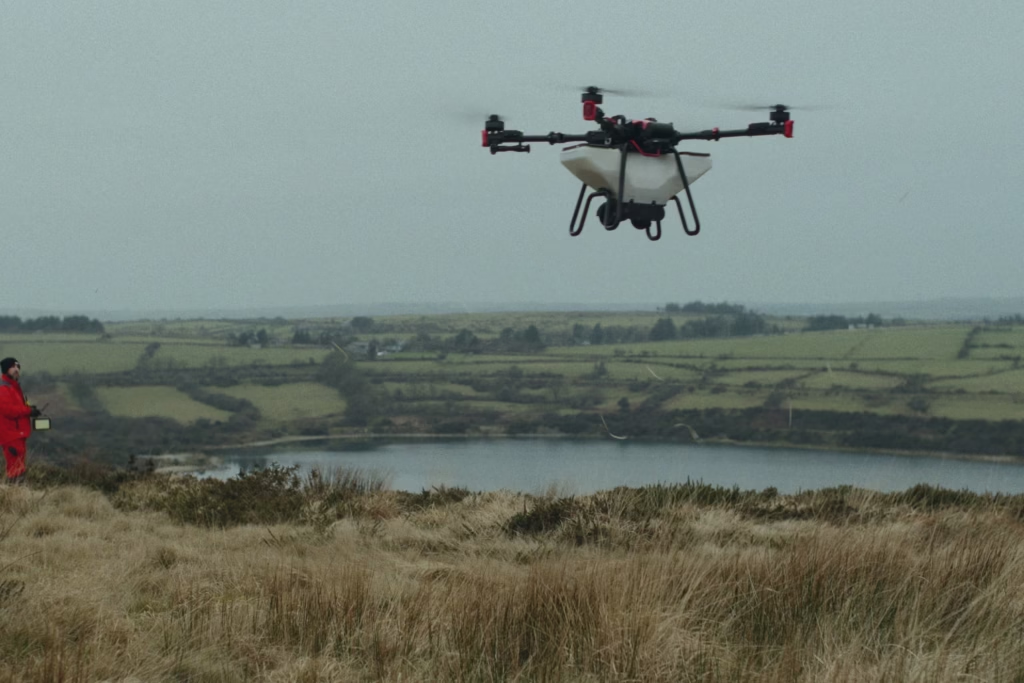In a major effort to restore natural habitats and combat desertification, Abu Dhabi has deployed drones to scatter 6.5 million seeds across remote areas. This cutting-edge reforestation project is not just impressive in scale—it’s also a sign of how technology is helping solve environmental challenges.
Why the Abu Dhabi Drones Seed Project Matters
The UAE faces tough environmental conditions, with vast desert areas and high temperatures making it difficult for vegetation to thrive. By using drones to spread native seeds across wild terrain, the government hopes to bring life back to barren landscapes.
This project is part of the Environment Agency – Abu Dhabi’s (EAD) wider strategy to restore natural ecosystems. It focuses on increasing plant cover, protecting biodiversity, and improving soil health in regions struggling with desertification.

How the Drones Work in the Seeding Process
The drones used in this mission are not your average flying machines. They are specially designed to carry and scatter thousands of seed balls in a single flight. These seed balls are made from native plant seeds combined with organic materials and nutrients, helping the seeds survive and grow once they land.
Each drone can cover up to 10 hectares per hour, allowing large-scale coverage in a relatively short time. This makes it a highly efficient and eco-friendly way to plant trees and shrubs in hard-to-reach or fragile ecosystems.
What Kind of Seeds Are Being Planted?
The project is focused on native plant species that are well-suited to the region’s dry and hot climate. Some of the main types include:
- Prosopis cineraria (also known as Ghaf): UAE’s national tree, highly drought-resistant
- Acacia tortilis: A tough desert tree that provides shade and improves soil
- Calligonum comosum: A native shrub that helps prevent soil erosion
These plants were chosen not only for their resilience but also for their ability to improve the surrounding environment. They can help reduce sand movement, attract wildlife, and even lower surrounding temperatures by providing shade.
Restoring the Balance: Nature Meets Technology
This initiative is part of Abu Dhabi’s broader environmental vision, which blends modern innovation with traditional conservation. The project covers several key areas in Al Dhafra, a region known for its harsh climate and vast open spaces.
According to the EAD, this drone seeding method is up to 10 times faster than traditional manual planting and much more cost-effective. It also reduces the human footprint in fragile ecosystems, which helps protect them from unintentional harm during restoration.
Tracking Success with Smart Technology

Monitoring the success of the Abu Dhabi drones seed project is just as important as planting the seeds. Authorities use satellite imagery, drone footage, and on-ground inspections to track growth and survival rates. Data is analyzed over time to adjust methods, ensuring the most effective strategies are used for future seeding.
This use of “smart farming” tools means the project isn’t just about planting—it’s about learning and improving continuously.
The Long-Term Vision for Abu Dhabi’s Green Goals
The seed-spreading mission is just one step in Abu Dhabi’s long-term plan to fight climate change and enhance food and water security. The EAD’s broader vision includes:
- Restoring at least 25% of degraded land by 2030
- Supporting the UAE’s Net Zero 2050 initiative
- Enhancing natural carbon sinks like trees and wetlands
- Educating communities on sustainability and conservation
By reviving natural habitats, the initiative helps local wildlife return to its original environment. Birds, insects, and small mammals benefit directly from increased vegetation and biodiversity.
Local and Global Impact
This project sends a strong message: Even in one of the world’s driest regions, nature can be brought back with the help of innovation and determination.
The UAE is setting an example that other arid countries might follow. Large-scale drone seeding could become a global trend, especially as nations look for fast, affordable ways to reforest land and tackle environmental problems.
Public Support and Global Praise
The public response has been positive, with many praising the creative use of technology for environmental good. Social media users have shared images and videos of the drones at work, sparking discussions on how such projects could benefit other areas in the Middle East and beyond.
Global environmental organizations have also shown interest, pointing out that rewilding efforts like this are crucial in the global fight against climate change.
Challenges Ahead and What’s Next

While the Abu Dhabi drones seed project is promising, it is not without challenges. The survival of the seeds depends on many factors, including rainfall, temperature, and soil quality. There’s also the risk of invasive species or pests disrupting the process.
To deal with this, the EAD plans to run controlled experiments and continuously test new materials and seed mixes. Community engagement and educational programs are also being introduced to raise awareness and encourage long-term care for the restored areas.
Final Thoughts: A Green Future Powered by Innovation
Abu Dhabi’s drones have done more than just drop 6.5 million seeds—they’ve planted hope for a greener future. With the environment high on the agenda and technology driving solutions, the UAE is proving that deserts don’t have to stay barren forever.
By combining smart tools, native knowledge, and scientific research, Abu Dhabi is turning dry land into living ecosystems—one seed at a time.
Read More: Man Stabbed to Death in Dubai Brawl Over ‘Immoral’ Services













